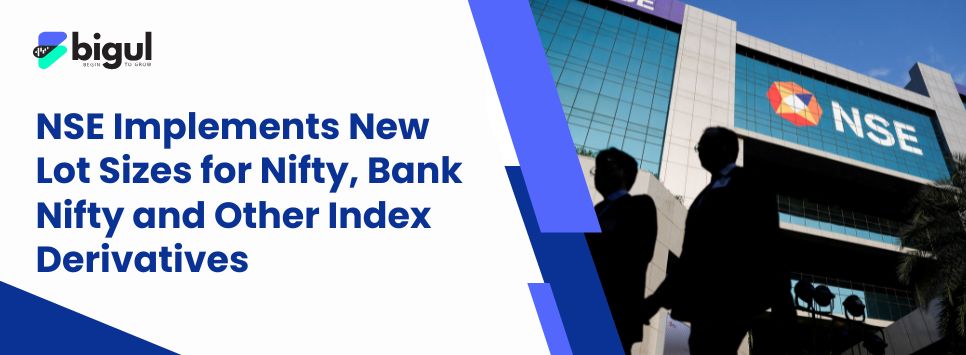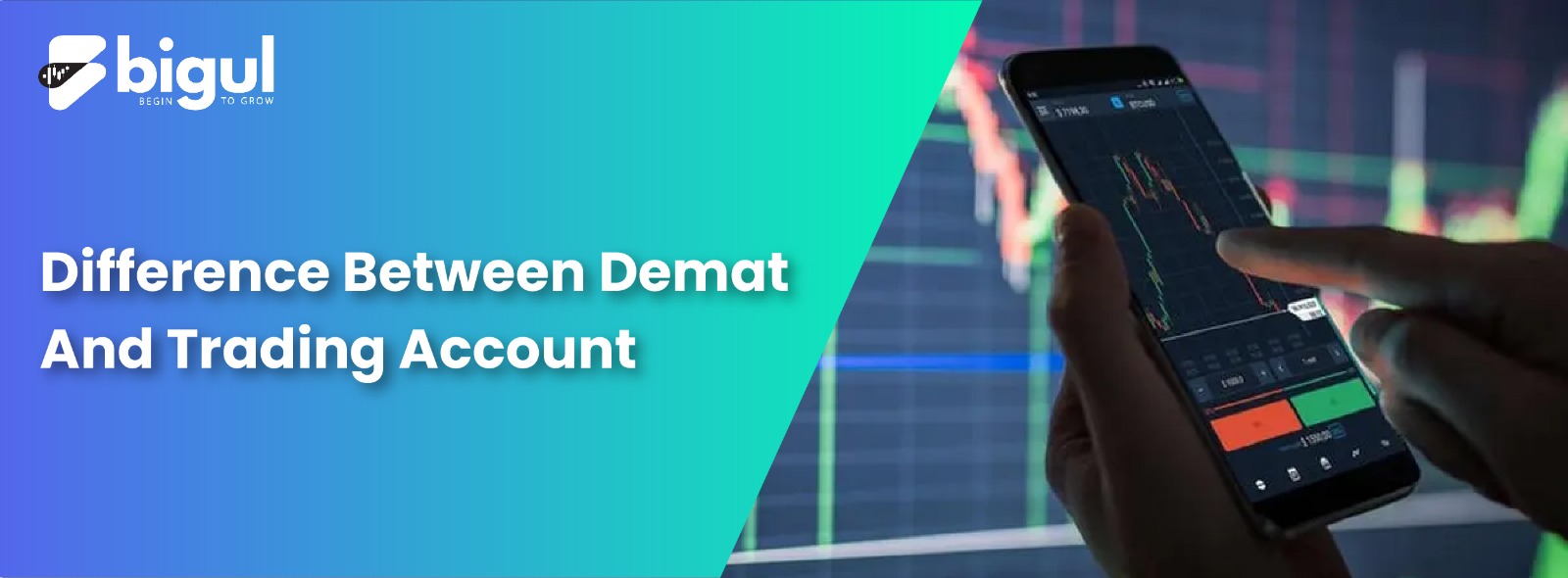Many times, investors hear about ‘Demat account’ and ‘Trading account’ and think they mean the same thing. However, it’s important to know that these two are different. Understanding the fundamental distinctions between these two financial tools is crucial for navigating the stock market effectively. In simple terms, think of your Demat account as a digital safe deposit box where your stocks and securities are stored in electronic form. On the other hand, your Trading account functions like a gateway, enabling you to buy and sell these stocks in the market.
This article will discuss the difference between Demat and Trading accounts, helping you understand the essentials of managing your financial portfolio.
What is a Demat Account?
A Demat account, short for ‘dematerialized account,’ is like a secure digital wallet for your investments. It holds them in electronic form, making it easy to manage and trade. Think of it as a safe, secure place where all your investment possessions are stored digitally. With a Demat account, you can say goodbye to the hassle of handling physical share certificates, as everything is conveniently managed in a paperless and efficient manner. It simplifies your investment journey by providing a seamless way to buy, sell, and keep track of your securities in the stock market.
What is a Trading Account?
Your Trading account is your gateway to the stock market. Think of it as your online platform for buying and selling stocks and securities. This account allows you to execute trades, facilitating the movement of stocks from your Demat account to the market and vice versa. It’s like the control center where you make investment decisions, monitor market trends, and actively engage in buying or selling assets. Your Trading account empowers you to participate in the dynamic world of trading, turning your investment strategies into actionable transactions with ease.
Difference Between Demat and Trading Account
Navigating the world of stock market investments requires a clear understanding of financial tools like Demat and Trading accounts. Often used interchangeably, these two accounts serve distinct purposes in your investment journey.
Here’s a breakdown of the key differences between a Demat account and a Trading account:
1. Nature of Account
A Demat account electronically holds securities, converting physical certificates into a digital format. It serves as a secure depository for stocks, bonds, and mutual fund units. On the other hand, a Trading account is used for actively buying and selling securities in the market. While the Demat account ensures secure storage, the Trading account facilitates the execution of orders.
Together, they form an integral part of the investment process, allowing investors to manage and trade financial instruments efficiently.
2. Functionality
A Demat account primarily functions as a secure repository for electronic securities, ensuring efficient storage and transfer. It is not directly engaged in the trading process but plays a crucial role in the settlement of trades. On the flip side, a Trading account serves as a dynamic interface for executing transactions in the stock market. When users place buy or sell orders, the Trading account processes these orders, facilitating the actual trading activity. Together, these accounts streamline the process of buying and selling securities, combining secure storage with transactional functionality.
3. Role in Transactions
A Demat account is not directly engaged in trading but serves as a repository for securities. It ensures the smooth settlement of transactions by crediting or debiting securities from the account after trades. In contrast, a Trading account is directly involved in the trading process, executing buy and sell orders in the stock market. When an order is placed, the Trading account processes the transaction. This allows users to actively participate in the buying and selling of financial instruments, with the Demat account reflecting the ownership changes after settlement.
4. Settlement Process
In the settlement process, the Demat account plays a crucial role after a trade is executed. When selling securities, they are debited from the Demat account, and when buying, they are credited. This process ensures the electronic transfer of securities between the buyer’s and seller’s Demat accounts. The Trading account is primarily responsible for order placement and execution. Whereas the Demat account manages the actual transfer and safekeeping of securities during settlement, providing a seamless and efficient system for investors in the stock market.
5. Charges
Charges for a Demat account may include maintenance and transaction fees, while a Trading account may incur brokerage fees and transaction charges. Both accounts may have additional fees, and the overall cost structure depends on the policies of the financial institution or brokerage firm providing these services.
Can You Open a Demat Account Without Having a Trading Account or Vice Versa?
Yes, you can open a Demat account without a trading account. However, this limits the functionality of the Demat account. Some trading activities can be done with just a Demat account, such as:
- Keeping shares from an Initial Public Offering (IPO)
You need a trading account for any type of securities transaction. For example, if you want to trade in futures and options, you don’t need a Demat account.
How to Open Demat and Trading Accounts?
Opening a Demat and trading account in India is a necessary step for individuals looking to invest in the stock market. Here’s a general guide on how you can open these accounts:
1. Choose a Depository Participant (DP)
Select a Depository Participant (DP), a registered intermediary facilitating Demat account operations. Commonly banks and stockbrokers, DPs are authorized by SEBI. Choose a reputable DP to ensure smooth account management. One popular online stockbroker is Bigul, who act as DPs and streamline the account-opening process for trading on Indian stock exchanges.
2. Documents Required
Prepare required documents for account opening. To open a Demat account, you need to provide the following documents:
- Proof of your Indian address
- Proof of your foreign address
- Portfolio Investment Scheme (PIS) letter issued by the RBI
You also need to complete KYC, or Know Your Customer, which involves confirming your identity, address, and income.
3. Fill Application Form
Complete the application form on the selected DP or stockbroker’s website. Provide accurate information matching the supporting documents, including proof of identity, address, and passport-sized photographs. Thoroughly review the form before submission to avoid errors. This step initiates the account opening process and ensures all necessary details are correctly recorded for a seamless verification process.
4. KYC Process
The KYC process involves submitting proof of identity, address, and photographs to the chosen Depository Participant or stockbroker during the account opening. This is a regulatory requirement for verifying the customer’s identity and ensuring compliance with Know Your Customer guidelines set by financial regulatory authorities like SEBI in India.
5. In-Person Verification (IPV)
In-Person Verification (IPV) may be required for opening a Demat and trading account. This involves a physical visit to the Depository Participant’s (DP) office or a video conference for verification purposes. IPV ensures the accuracy of the provided information and helps maintain the integrity of the account-opening process, as per regulatory requirements.
6. Submit the Form and Documents
Submit the completed application form and required documents to the chosen Depository Participant (DP) or stockbroker. This step involves providing accurate information, agreeing to terms and conditions, and ensuring all necessary paperwork is in order. This submission initiates the account opening process, and the DP or stockbroker will proceed with verifying the details before approving the Demat and trading accounts.
7. Verification and Approval
Upon submission, your Demat and trading account application undergoes verification. Once approved, you’ll receive a welcome kit from the Depository Participant or stockbroker. This kit includes essential account details like the Demat account number and trading account information. After receiving the kit, you are ready to commence trading in the stock market using the provided credentials.
Do you need both Demat and a Trading account?
Yes, both a Demat account and a Trading account are essential for investing in the Indian stock market.
A demat account is required to:
- Purchase and store financial securities
- Settle open equity intraday positions
- Physically settle stock F&O contracts
A trading account is required to:
- Purchase and sell shares
- Invest in securities such as stocks, bonds, ETFs, and currencies
- Access technical analysis tools and charts
The Securities and Exchange Board of India (SEBI) requires everyone who wants to trade Indian securities to have a demat account.
Conclusion
Understanding the dissimilarity between a Demat and Trading account is crucial for anyone entering the stock market. While a Demat account holds your securities, the Trading account facilitates buying and selling. Together, they form the backbone of stock trading. Simplifying the complexities of financial jargon, these accounts ensure a seamless trading experience.
For hassle-free and user-friendly trading, consider exploring the Bigul trading platform—an intuitive solution for both beginners and advanced investors.




.jpg)





.jpg)
